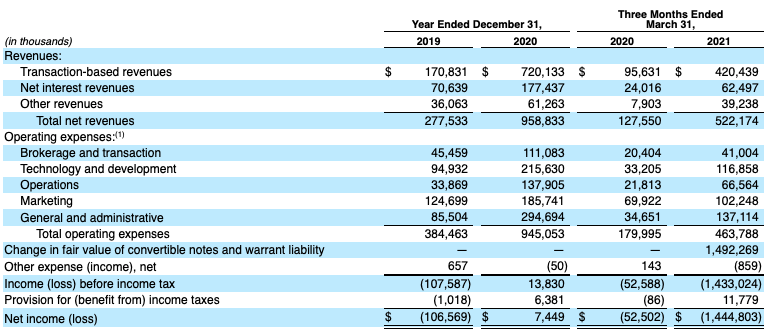For a brief moment, earlier this week, it seemed as though Pittsburgh might be the center of the tech universe. Just as Carnegie Mellon alum Duolingo was announcing its IPO. Senators Bob Casey and Pat Toomey were in town, as Vice President Kamala Harris paid a visit to the City of Bridges to talk infrastructure.
The morning of TechCrunch’s City Spotlight, the Pittsburgh Robotics Network held its own event to announce a new alliance with members of the local government and faculty from nearby universities.
“The alliance brings together leaders from top robotics companies, research institutions and universities in the Pittsburgh area, including Carnegie Mellon University (CMU), Argo AI, Aurora, the University of Pittsburgh, Kaarta, RE2 Robotics, Neya Systems, Carnegie Robotics, HEBI Robotics, Near Earth Autonomy, BirdBrain Technologies, Omnicell and Advanced Construction Robotics,” a press release noted. “The Richard King Mellon Foundation commemorated this membership milestone with a grant of $125,000 to support the continued growth of the PRN.”
Our own Spotlight event, held later that afternoon, was designed to highlight the city’s continued evolution. To many, Pittsburgh is still very much the plucky but troubled city reeling from the deindustrialization of the 70s and 80s, as the factory and industry jobs that formed its foundation moved out of town and shipped overseas. The rust belt veneer is a hard one to leave behind, but the city’s biggest cheerleaders are working hard to transform the image of Pittsburgh into one of robotics, AI, autonomy and other cutting-edge technologies.
Carnegie Mellon has — and continues to be the cornerstone of that Pittsburgh. A world-class research school by any metric, CMU is the crown jewel of the area’s dozens of colleges and universities. While the University of Pittsburgh is a huge driver for the city’s medical and science communities, CMU is the reason it can count itself among the leaders in robots and self-driving cars.
Speaking at our event, Farnam Jahanian cited the school’s The Swartz Center as a major driver in its efforts to support the startup ambitions of students and faculty alike.
“The Swartz Center for Entrepreneurship at Carnegie Mellon is a system of programming activities that offers a unique path of entrepreneurship, education, engagement, collaboration and opportunities for students, faculty and staff that are interested in entrepreneurship, from the Innovation Scholars Program, to the corporate startup lab, to essentially garages that students and faculty can essentially sign up for to launch their companies from plus a host of other programmatic things, resources that you would need,” says Jahanian, who was appointed CMU’s president in 2018.
The Swartz Center for Entrepreneurship was founded in 2015, courtesy of a $31 million donation from CMU alumnus and Accel Partners co-founder, James R. Swartz. The center built on previous efforts like 2012’s Carnegie Mellon Center and Project Olympus, founded in 2007. The Swartz Center and its recent precursors list among their success stories Duolingo, DataSquid and AbilLife.
Dave Mawhinney recently told TechCrunch that he took the role as the center’s executive director in an effort, “to make it on par with Stanford, MIT, Berkeley, Harvard and other great entrepreneurial universities.” CMU certainly isn’t outclassed by any of the above in terms of its position as a world-class research university, but Mawhinney concedes that the school and the city have traditionally grappled with entrepreneurial retention.
“You can always learn from what you have and build on it,” says Jahanian. “I would stress it is really about the entire ecosystem. It’s not about just what CMU does — that’s a critical part of it. It’s University of Pittsburgh, it’s other universities that are in our region that are also contributing significantly to our ecosystem.”
Mawhinney says that CMU’s ability to incubate and foster tech startups hit an inflection point roughly a decade and a half ago, as Big Tech took an increasing interest in the research the school was doing around things fields like AI and automation.
“Really, the seminal event was when Google put an office in Pittsburgh in 2006. They have over 1,000 employees,” he says. “Every major tech company — Amazon, Facebook, Apple — have all embedded hundreds of engineers in our community, so we’re growing really, really rapidly. Artificial intelligence was invented at Carnegie Mellon — and that sort of set off the robot revolution [ … ] Now we’re the center of the automated vehicle community. Aurora is co-located here, Argo is here, Aptiv is here. We have a very vibrant community and we do want to continue to grow it.”
Building a successful company requires a lot more than engineers, of course (there’s a decent chance you wouldn’t be reading this if that weren’t the case). In the lead up to our event, I asked several interested parties what the biggest hurdle was in continuing to attract and grow the city’s startup ecosystem. The overwhelming answer was simple: venture capital.
“What we need is more capital — angel funds, venture funds so that entrepreneurs have a variety of funding sources to go to locally,” Yvonne Campos of Next Act Fund LLC told TechCrunch. “We definitely need more funding for women-led businesses — women raise about one-third less capital than men-led companies. Not because of the business idea or leader, but because we invest in companies where we have the most comfort — we invest in people that look like us. Nationally, only about 20%-25% of all angel investors are women. We need more women to become active as investors.”
The city’s mayor, Bill Peduto, who also appeared at our event, echoed the sentiment.
“I think the biggest hurdle remains access to venture capital, especially in this stage. I think we’ve been able to convince investors from the coast that the companies don’t need to leave Pittsburgh in order to be highly successful and see their investment pay off,” he told me in an interview. “However, I believe if we had more venture capital arriving here to help to take early-stage companies into that critical next stage of expansion, it would build off itself and it would excel growth in all of the industry cluster, significantly.”
During our conversation, however, Jahanian pushed back on the sentiment. “I respectfully disagree,” he told me. “Funding is important, but great ideas get funded. I’ve seen it my entire career. They get funded at levels that really show that these companies have a shot at being really successful.”
CMU’s president points to another problem, entirely. “You need a lot more than just cool technologies or new research ideas or new concepts or products just to launch a company,” Jahanian says. “You need a lot more around it. You need marketing, product management, you need to be able to develop a business plan. So those are a lot of the resources that we do provide.”
Kleiner Perkins CPO Bing Gordon reflected the sentiment, speaking to me over email. “[Pittsburgh needs] to import CFOs, product managers, ad sales,” he wrote. Another historical concern for the city is attracting that talent. CMU hasn’t had an issue on that front, because location is less of a key concern for students applying for research universities. When it comes to careers after college, settling down and starting a family, on the other hand, suddenly quality of life rockets up the list.
Jahanian says he has long championed green spaces and other communal gathering places in his conversations over the years with Peduto. He adds that the subject should continue to be top of mind for whoever the city’s new mayor is next year.
“One of the most important things about the startup and high-tech community in Pittsburgh is the quality of life for citizens across this town,” says Jahanian. “I can tell you as a university president, an overwhelming majority of the faculty that we recruit want to live in the city and enjoy it. That’s an important part of it. Obviously, there’s a lot more going on beyond the quality of life. The more that the city does to bridge the gap between those who are prospering and those who are potentially left behind in the economies that are created the high-tech economies is important. That’s a responsibility of the private sector and the public sector. I’m really optimistic that we’ll have a great partnership with our future mayor, as we’ve done in the past mayors to catalyze the economy and lift all boats.”

Source: Tech Crunch








